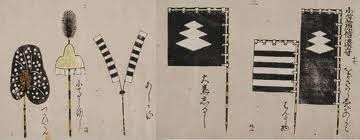Esta es la peana de Suwa Yorishige, daymio y sacerdote del templo Suwa Myojin.
- - -
This is the base of Suwa Yorishige, daymio and priest of the Suwa Myojin temple.
Suwa Yorishige controlaba los terrenos circundantes al lago Suwa, considerado sagrado por ser la residencia de un dios kami. Yorishige ejerció a la vez como señor y sumo sacerdote del templo, y llegó a pactar alianzas militares con Murakami Yoshikiyo y Ogasawara Nagatoki en contra del expansionismo de Shingen. Sin embargo, Suwa fue el primero en caer. Tras una campaña fulgurante, Yorishige tuvo que rendirse a Shingen, y aunque fue tomado como rehén y enviado a Kai, allí fue obligado a cometer seppuku.
- - -
Suwa Yorishige controlled the terrains along the Suwa lake, considered sacred because of being the residence of a kami god. Yorishige acted both as lord and chief priest of the Suwa shrine, and he act together with Murakami Yoshikiyo and Ogasawara Nagatoki against Shingen's expansionism. Nevertheless, Suwa was the first to fall. After a thundering campaign, Yorishige must surrender to Shingen, and although he was taken as a hostage and sent to Kai, there he was obliged to commit seppuku.
Los estandartes de Suwa Yorishige son bastante controvertidos. He decidido basarme directamente en el sistema heráldico que aparece en la serie Fuurin Kazan, de 2007, que utilizo para inspirarme en la preparación de la campaña de la conquista Takeda de Shinano.
- - -
The banners of Suwa Yorishige are a bit controversial. I've decided to use directly the heraldic display that appeared in the drama Fuurin Kaza, 2007, which I use to get inspired in the Takeda conquest of Shinano.
Estos dos estandartes son los más fiables. El Uma Jirushi muestra el emblema de las flores que es indiscutiblemente de la familia Suwa. El Hata Jirushi muestra la plegaria al dios Suwa, y es un estandarte que más adelante adoptará Shingen como parte de su propia heráldica. En el original, he utilizado color oro para repasar las letras en amarillo.
- - -
These two banner are the most reliable. The Uma Jirushi sows the flowers symbol which is undoubtedly part of the Suwa heraldry. The Hata Jirushi sows a pledge to the Suwa god, and is a banner that lately will be adopted by Shigen as part of his own heraldry. In the original flag, I've used gold color to paint the yellow letters.
Este nobori es el que aparece en la serie de Fuurin Kazan, y es el que he elegido yo.
- - -
This is the nobori that appeared in the Fuurin Kazan drama, and is the one I've adopted.






























